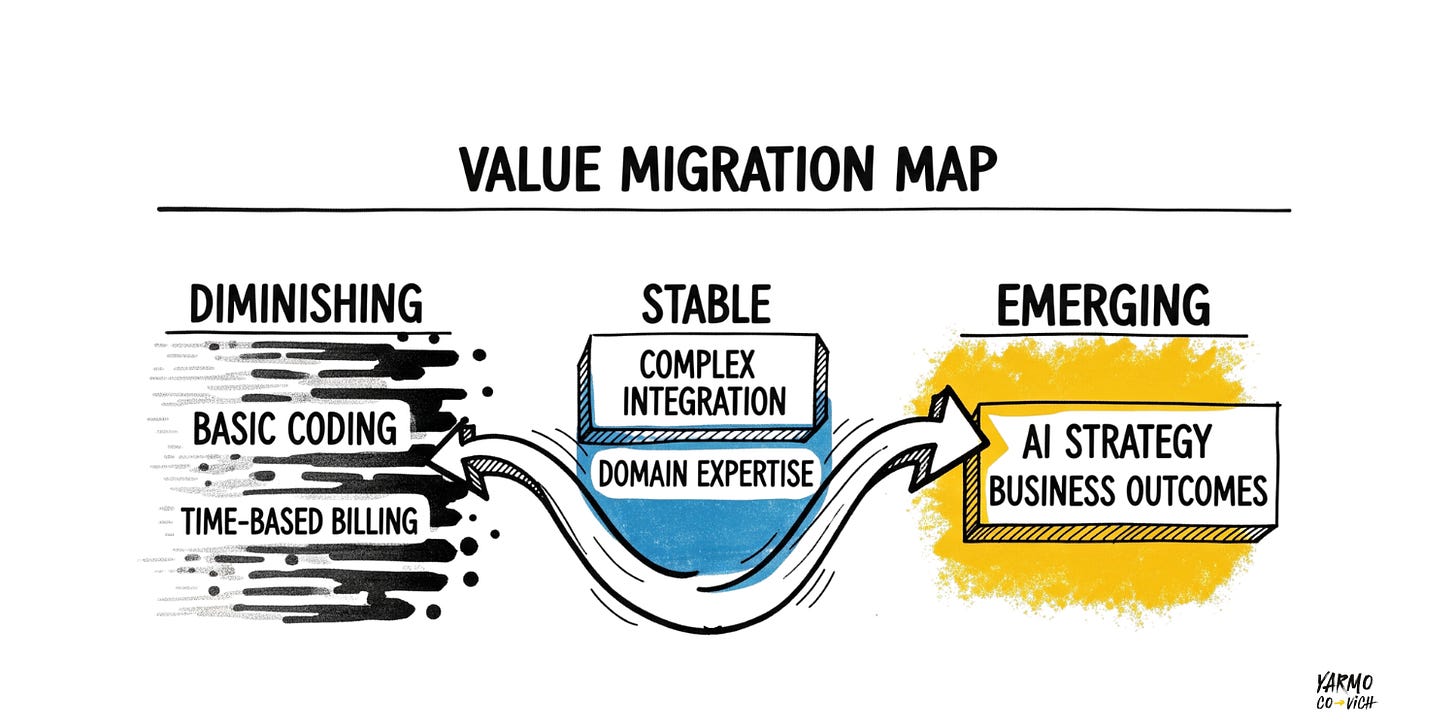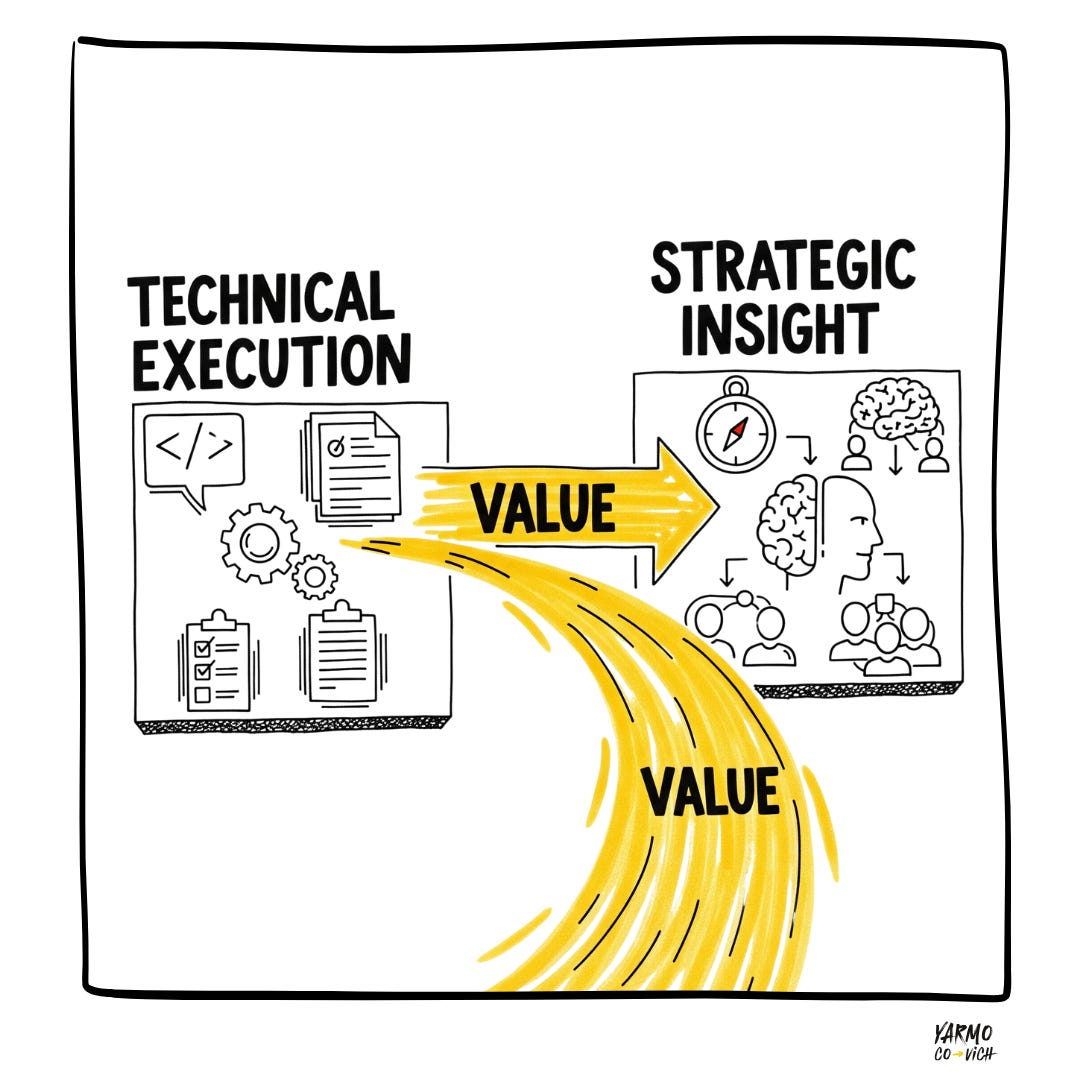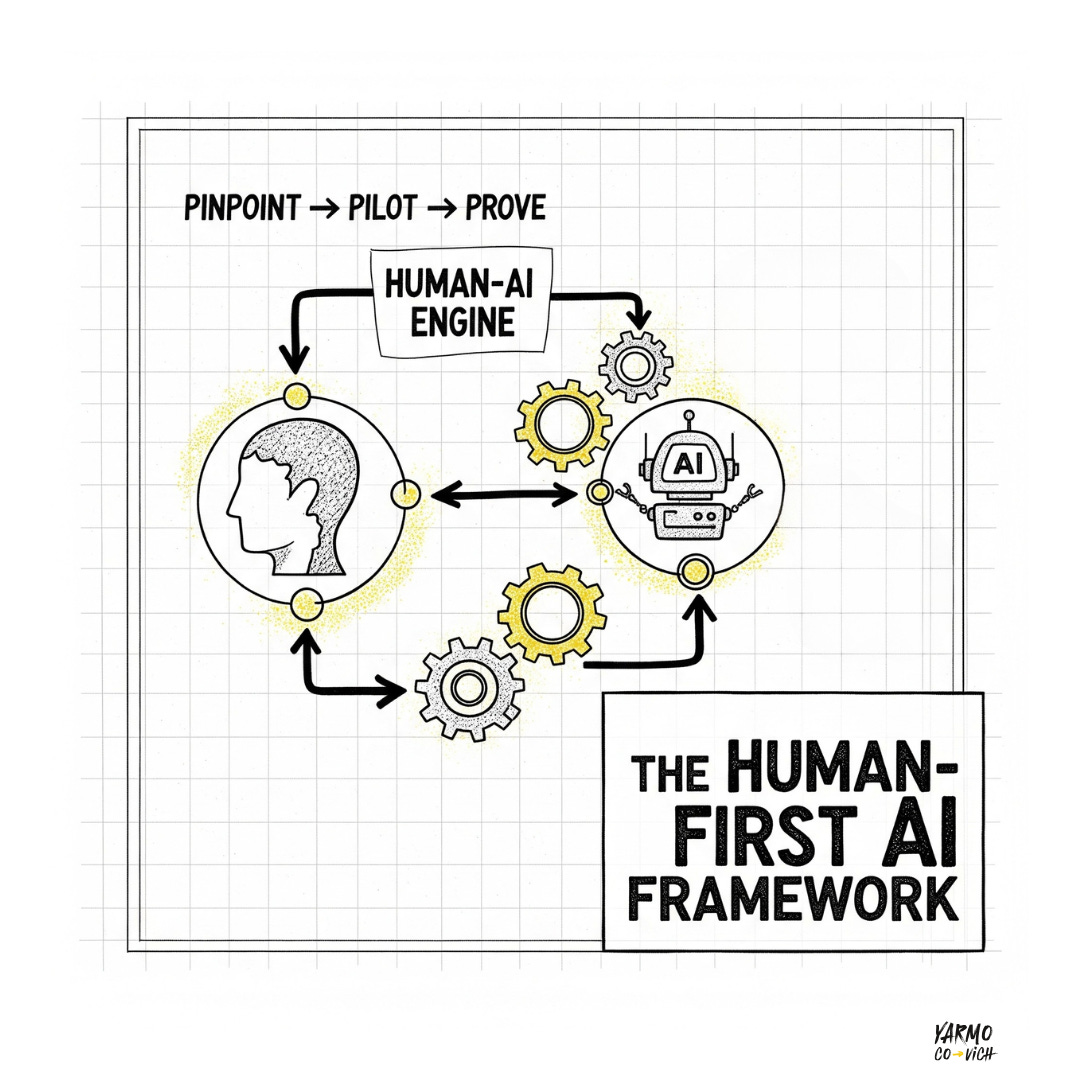Charting the Course: Strategic Transformation for Software Agencies in the AI Economy
This is the final part of a 4-part series exploring how CEE software agencies can thrive as AI transforms our industry. The insights presented here were developed through collaborative exploration sessions with Calin Muresan in March-April 2025, examining potential futures for software services in an AI-dominant landscape.
TL;DR: Survival requires systematic transformation: strategically retire commoditizing services while building new capabilities, invest in people's domain expertise and judgment, make everyone consultative, and use AI to your advantage.
The time for incremental adjustments has passed. What software agencies need now is profound business model transformation – nothing less will suffice.
Through my collaborative work with Calin Muresan, combining our experiences across software agencies and client relationships, we've identified that agencies need systematic change across six strategic areas. They can't fight against this shift. They must embrace it strategically, repositioning themselves toward areas where human capabilities create distinctive value.
Based on our collaborative workshops, thriving agencies are implementing six strategic moves:
1. Take Stock and Transform Your Portfolio
First, get brutally honest about your current service offerings. Map everything you do across those three value territories we discussed earlier - Diminishing, Stable, and Emerging. Look at your margins, what clients are saying, and how you stack up against competitors.
I'm not suggesting you immediately abandon everything in the diminishing value zone. That would be financial suicide for most agencies. Instead, develop a thoughtful transition plan.
Create a "service retirement schedule" where you actively plan the phase-out of commoditizing services while simultaneously developing new offerings higher in the value chain. It becomes a visual roadmap everyone in the company can understand.
One agency I worked with mapped their services and discovered that 60% of their revenue came from work that would be heavily automated within two years. This honest assessment became the foundation for their successful transformation strategy.
2. Invest in People's Capabilities
This is absolutely critical. You need to develop your team in two parallel tracks:
First, deepen your domain expertise. This happens through immersing people in client industries, targeted training, and sometimes strategic hiring. I've seen success when agencies assign people to learn specific industry verticals rather than just technical specialties. The demand is shifting toward business acumen and domain knowledge.
Second, cultivate true mastery through mentorship. The difference between technical craft (which AI is getting good at) and professional insight (which comes from experience) is significant. Create intentional mentoring structures where your most experienced people can transfer their wisdom. All those insights that never make it into documentation or training materials.
AI disrupts knowledge transfer systems that have operated for generations. Academic research suggests that the skills required in occupations most susceptible to AI influence are changing 25% faster than in other occupations. This highlights the urgency for structured mentorship programs that preserve and transfer professional wisdom.
3. Make Everyone Client-Facing a Consultant
Don't just create a separate 'consulting' department. I made this mistake myself. It gives the appearance of adopting a new service model without genuinely integrating the necessary mindset throughout the entire organization.
What's needed is to spread a consultative mindset throughout your entire organization. Every client-facing person needs to develop business understanding and advisory capabilities. From developers and designers to QA and project managers. This means fostering a cultural shift where they are empowered to:
Challenge requirements, asking 'why' before 'how' and probing for true business needs, rather than just implementing specifications
Anticipate future needs and spot strategic opportunities clients haven't yet imagined
Read the room in client meetings, discerning unspoken concerns and building trust through genuine empathy
Translate complex technical decisions into measurable business outcomes, explaining not just what was built, but why it matters for the client's bottom line or strategic goals
Understand the unwritten rules and nuances of specific industries, like healthcare or finance, making them indispensable partners
This cultural transformation takes 12-18 months and requires uncomfortable conversations about changing performance metrics and team structures. But agencies that commit to this process see measurable results. Higher margins, stronger client relationships, and natural differentiation from competitors.
4. Use AI for Your Own Advantage
There's a certain irony here. Even as AI disrupts our industry, it also provides tools to help us adapt. Use AI to enhance your own operations while maintaining the human wisdom that ensures quality.
This creates a powerful dual advantage: you become more efficient internally while simultaneously gaining firsthand experience with AI that builds credibility with clients facing similar transitions.
Don't just layer AI onto existing processes though. That's a common mistake I see. Research from MIT Sloan Management Review emphasizes that this approach yields suboptimal results. Take the opportunity to fundamentally rethink how work gets done. How might AI augment decision-making? How could it improve quality assurance? How might it transform your delivery processes?
I've developed practical tools for this systematic work redesign through my Human-First AI Framework. The Intelligence Audit helps agencies map workflows between Craft (what AI can handle) and Wisdom (what requires human expertise). Combined with the Transformation Potential Map, agencies can prioritize exactly where to integrate AI for maximum impact while preserving human value.
These tools are available as open source - I encourage you to test them, adapt them, and make them work for your specific context. You can access the complete framework and assessment toolkit at LINK.
5. Build Responsible AI Governance as a Competitive Advantage
Given that Accenture reports only 2% of companies have fully operationalized responsible AI practices, there is a massive competitive opportunity in the market. Responsible AI governance means having clear frameworks for data privacy, bias detection, security protocols, and ethical decision-making in AI systems.
When agencies develop these capabilities internally - ensuring their own AI use is transparent, secure, and ethical - they gain credibility to guide clients through similar challenges. Clients facing AI implementation are looking for partners who have already solved these problems themselves.
Developing strong internal capabilities in Responsible AI governance becomes a powerful differentiator that builds client trust and positions you as an indispensable strategic advisor.
6. Consider Fundamental Business Model Shifts
Some agencies are exploring even more dramatic transformations beyond service enhancement. This means shifting from being implementation-focused agencies to strategy-led consultancies that solve business problems first, then recommend technology solutions. Instead of "we'll build what you specify," it becomes "we'll help you determine what actually needs to be built and why."
Other approaches include incubation models where agencies co-create and co-own digital products with clients, or creating internal startups that develop proprietary solutions. These models focus on strategic insights and problem-solving rather than just technical execution, potentially creating higher margins and more distinctive market positioning.
The Leadership Imperative
Here's what nobody tells you about transformation - it's messy, uncomfortable, and full of false starts. The agencies succeeding aren't those with perfect strategies. They're those with leaders brave enough to admit the old model is dying.
Be transparent with your team. Share the challenge and the vision. Celebrate small wins. Most importantly, model the continuous learning you're asking from others.
For those of us in the CEE region, our strong technical foundation gives us a good starting point. But we need to intentionally build new capabilities in business acumen, strategic thinking, and domain expertise.
The cost game that built CEE's tech success is ending. But the next game - built on strategic value, human insight, and AI augmentation - could be even better.
Whatever approach you take, Calin and I have both noticed that being honest about AI's challenges builds more credibility than making grand promises. Clients appreciate straight talk about what's actually possible.
The question isn't whether to transform. It's whether you'll lead the change or be dragged along by it.
The choice, as always, is yours.
— Yarmo Covich & Calin Muresan
This series emerged from collaborative working sessions between Calin Muresan and myself, exploring how AI advancement will reshape software service value chains. Calin's insights on agency business models and client relationships were instrumental in developing these strategic frameworks. For CEE agencies ready to move beyond the cost game, the future isn't about competing with AI – it's about creating value that only humans can deliver.
Previous: The Human Edge: Cultivating the 'Human Wisdom' AI Can't Automate







